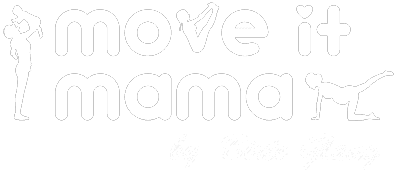Dear mama, many women suffer from leaking or incontinence after giving birth. What does this mean exactly? Even the smallest movements, such as sneezing, cause involuntary leakage of urine. A weakened pelvic floor and lack of bladder control is usually the cause. Today we start with our new series about the pelvic floor and explicitly about “pelvic floor weakness and leaking after birth”. Learn how you can effectively counteract it and which exercises help.
Why does leaking occur after childbirth?
Your pelvic floor is exposed to a great load during pregnancy and especially during vaginal birth. Therefore, it needs special attention after birth!
So the discomfort often occurs during pregnancy, as more and more weight is placed on the pelvic floor and bladder. Causes that can lead to leaking after birth are also smoking, obesity and gestational diabetes. Dear mom, but these can be influenced! (It is best to do this before you become pregnant). However, the most common cause of leaking or urinary incontinence is probably: pelvic floor weakness. What you can do about it you will learn below…
What exercises help against leaking?
After childbirth, your pelvic floor is weakened, so it is important to slowly rebuild the pelvic floor muscles and thus regain bladder control. Already in the first weeks after birth you can start with gentle gymnastics and breathing exercises to regain a feeling for the pelvic floor. You can even do these exercises from the comfort of your bed or while sitting down! Particularly good sitting positions are the heel seat and the cross-legged seat.
These exercises help against leaking:
- Pelvic floor breathing (there are various techniques here!)
- Pelvic floor activation through gentle postpartum exercises
In an article for Fit for Fun, “Postpartum recovery and fitness re-entry after childbirth,” I give detailed instructions and also sample exercises that are great for getting your pelvic floor going again. Regular exercise helps to stabilize the pelvic floor again and effectively counteract complaints such as incontinence.
Everything begins with abdominal breathing …
Abdominal breathing is also especially important. Already days after birth, you should help your body to heal with gentle abdominal breathing.
The following exercises are particularly suitable for this:
- Sit comfortably, in a cross legged position your shoulders, head and neck relaxed, lengthen through your spine
- When you breathe in: our diaphragm moves down, sucking air into the lungs. As the diaphragm moves down, it pushes all abdominal contents down, which forces the abdominal wall out
- When you breathe out: the diaphragm relaxes and moves upward , helping move air out of the lungs
This process is a little out of training because it didn’t work so well with a baby in there. So now your body has to get used to this again.
So now you want to actively engage the stomach, abdominal muscles, and diaphragm. Imagine to roll up all three pelvic floor layers when you exhale:
1st layer: imagine to pull all body openings up and in
2nd layer: pull the sit bones towards each other and up
3rd layer: pull tailbone up towards crown of the head and at the same time belly button towards breast bone
Now change it up: Do all pull-up movements while INHALING, and when you exhale you release.
Both are very basic breathing techniques and there are many more. In our MAMA WORKS THE FLOOR series and also our newest series you will find a diverse selection of breathing exercises.
Can I start exercising during the first weeks after birth?
Yes you can and you should! MOVE IT MAMA also has something especially for the first weeks after birth (the Special 15 program). This was developed together with a team of midwives, moms and professional trainers exactly for the time right after birth and includes such exercises, which serve primarily to slowly rebuild the pelvic floor muscles. Afterwards, I recommend that you incorporate the pelvic floor breathing techniques you have learned into your daily routine and other training during the postpartum recovery. This way you save time and don’t neglect these important little muscles. #SuperFitMama
It is important to start strengthening the pelvic floor early enough and not wait until the incontinence is already advanced and jumps, wetting, coughing or laughing lead to a small pee accident.
What can I do to counteract pelvic floor weakness and leaking?
- Heavy lifting in the first weeks after birth is absolutely taboo. You should also avoid movements such as bouncing and jumping.
- Find a midwife to accompany you during the postpartum period and be sure to start postpartum and later postpartum gymnastics. In addition, you can try our MOVE IT MAMA program for the postpartum phase followed by the postpartum phase. Here our team of experts and I will guide you safely through all the mommy exercises!
Dear mom, the key to a healthy pelvic floor and therefore pee-pee-free moments of wetting, laughing, coughing or trampolining lies in you! If you are in this situation, start now with the MOVE IT MAMA program and feel the positive change. 🙂
In the coming articles we will continue with the pelvic floor series. Get ready for exciting facts about this important mommy topic!
Keep it Moving,
Your Birte.
Try move it mama 7 days for free
We give you a trial week in which you can test MOVE IT MAMA free of charge and without obligation.


